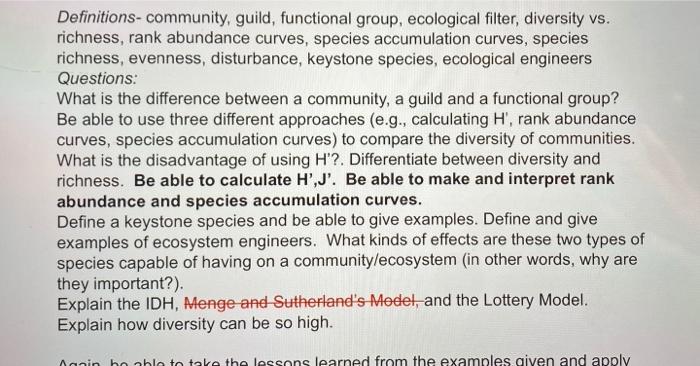
Cultural anthropology studies human behavior and culture. Anthropologists divide culture into two distinct types: sociological "society", and cognitive "culture". Sociology is the study of social behavior, including how people interact with objects and each other.
Cultural Anthropology
Cultural anthropology studies the history of human cultures and social structures. The study and analysis of cultures and societies allows us to understand socio-political and economic systems. It provides insights into how to address global issues and social inequalities. Cultural anthropology is also useful in understanding the causes of prejudice and inequality.
Anthropologists are experts in studying societies of all types and they use their fieldwork experience and knowledge to study human societies and their practices. Their researches aim to understand how culture changes over time.

Theories about culture
Many theories of culture within anthropology are based in different assumptions. Structural-functionalists, for example, see culture as a set of normative beliefs that people use to guide their behavior. Historical-particularists, on the other hand, view cultures as the product of historical processes. Symbolic anthropologists also focus on the mental constructs of various cultures.
Pierre Bourdieu's innovative statistics and in-depth interview techniques have influenced cultural studies greatly. Many scholars consider his work scientific. However, cultural studies is not a fan of the idea of scientificity. They have argued against it in a range of ways.
Studying culture: Methods
Cultural anthropologists have many methods of studying other cultures. Most of this research involves participating in and being observed by another culture. This gives anthropologists a better understanding of the lives and culture. An ethnographic method is a way to learn the language and see how people live in particular places.
Anthropologists define culture to be a collective set of ideas, concepts, rules, and behaviors that enable a social group or individual to function and survive. Cultural glue is what holds a society apart.

Culture has class distinctions
Anthropologists need to be able to distinguish between classes in order to study culture. Although scholars have been studying social hierarchy and its effects in the past. Very little has been written on class as a central component of analysis. However, culture and consciousness play a crucial role in shaping the perceptions of people's social worlds. Understanding class can help us gain a better understanding of human societies as well as their evolution. This book will appeal to sociologists, anthropologists, and labor scholars who are interested in class.
But cultural differences between classes are difficult to discern. There are many ways to understand class differences, and not all of them are based on socioeconomic status. For example, rural proletariats typically have links that cross class lines. These links can, however, be less effective than ones based on religion or ethnicity. These connections are often seen as substitutes for class by neoMarxists. Original ethnographers also found class not to be very useful and preferred concepts of patron-client relationships and networks.
FAQ
What can I do to use pop culture in my marketing strategy
You need to examine the trends in pop culture to learn how you can use it in your marketing strategy.
Let's assume, for example that you wanted a promotion to promote a new movie. What kind of promotion would you be able to run?
You could make a trailer using clips taken from the movie. You could even find a clip with one of your products or services that you can use in the video.
Another option is to create a parody trailer using clips from other movies.
You could use the movie's plotline to create a promotional campaign for a product or service you were trying to promote. One example: If you are promoting a product or service that helps astronauts keep healthy while they travel through space, it might make sense to promote the product.
You could promote your business based on the movie's storyline if it was connected. If your company sells food products, you might offer customers free samples if they buy tickets to the movie.
Who was the first to coin the term Pop Music
Frank Zappa invented it. Pop music was his preferred style.
He stated that he wanted to create music that appealed to everyone. He called his music "pop music".
Zappa also invented the phrase "You Know It's Pop when ..."", which signifies that something is popular if there are many people who enjoy it. Michael Jackson's Thriller record is one of the most successful.
Zappa's definition of pop music is different from how it is now. Pop music is today all music. But, there were only certain types of music that was considered pop back in those days.
What are some examples of pop culture in 2020?
The music industry is evolving rapidly. We saw artists like Travis Scott and Post Malone reach number 1 on Billboard’s Hot 100 chart. This was an extraordinary feat for any artist.
The same applies to streaming services. Spotify reported that Spotify streamed more 10 billion hours audio content last year. That's around 5 times what users were listening to just five years ago!
This has led to a dramatic shift in how media is consumed. These days, people spend more time consuming content than creating it.
Everyone, from toddlers to seniors, has an access point to high-quality audio content. This allows anyone to record, edit and mix their music.
To play your favorite song you don't have a degree in classical music theory. Download an app, add your voice, then upload them to YouTube.
And if you don't want to make music yourself, why not watch someone else doing it instead? You will find many channels dedicated to creating videos of songs from covers to parodies.
Are Tik Toks pop culture?
Yes! It's not just for teenagers anymore. These videos can be used by anyone to express their feelings, share life moments, and show support.
The app is used daily by more than 200 million people around the globe. This number is growing by millions every day.
This makes TikTok an incredible opportunity for brands to connect with consumers and build meaningful relationships.
Many influencers have established huge followings on TikTok. These creators create original content which engages audiences around the globe.
So, what are you waiting? Here are four methods to capitalize on this trend.
-
Make viral content
-
Engage Influencers
-
Use Visuals Effectively
-
Be Creative With Your Audience
How did pop music come into being?
It was an accident. It was an accident. Someone accidentally knocked the piano over as they were playing around on New Years Eve in 1920.
The recording company loved what they heard so they decided to release the single.
This was the first single to be recorded.
Pop music has been the most loved form of musical entertainment since then.
What are the examples of pop-culture in 2021
The world was changed forever on 11th September 2001, when two planes were hijacked by terrorists and crashed into the twin towers of the World Trade Center in New York City. This would be known as September 11, 2001.
These events have had a profound impact on popular culture, and they continue to have an influence today. We can see many ways the event has influenced lives.
This includes television programs like 24 and movies like United 93 that tell the story the what happened during the flight between Boston and Los Angeles on 9/11. Dexter Filkins' The Forever War book is included.
We all recall our exact location when we first heard of the attacks. Some people got out and ran outside while others stayed in bed or read newspapers.
Pop culture is something that changes every year. Pop culture is a reflection of society and an inspiration. How will pop culture evolve in the coming year? We don't know yet. All we know is that it will be different than it was before.
What is pop media culture?
Pop culture is all around. Pop culture is everywhere you go: radio, television, film, music and magazines. It is all around us 24/7. It has an impact on everything: music, clothing, language and politics. What then is pop culture? Wikipedia states that "Popular culture" refers specifically to ideas and products intended for mass consumption. Many people assume that the term covers television shows, movies music, fashion and other forms entertainment. Pop culture encompasses much more than entertainment. Pop culture refers to everything that's consumed by the masses. This includes fast food and video games as well as toys and clothing.
Statistics
- Recently, the market share across Western Europe has ranged from 60-75% (Hopewell, 2013). (socialsci.libretexts.org)
- According to Kathryn Sorrells (2013, pp. 142-144), there are several ways that we can become informed consumers of popular culture. (socialsci.libretexts.org)
- For example, the term hater meaning someone who strongly undermines or criticizes others, often due to pathetic jealousy, likely emerged from hip hop culture, such as the term playa hateras, used by influential rapper Biggie Smalls as early as 1995. (simplicable.com)
- Less than a decade later, that statistic rose to 90% (Dager, n.d.). (socialsci.libretexts.org)
- According to CNBC.com, “more than 70% of the film's revenue came from countries outside the US” (https://www.cnbc.com/2019/01/08/aqua...nal-sales.html, ret. 8/18/19). (socialsci.libretexts.org)
External Links
How To
What are some notable pop culture references?
Space travel was a popular topic in the 1960s. Star Trek was the most famous TV series of that era.
From 1966-1969, the original series aired at NBC. The series starred William Shatner playing Captain Kirk, Leonard Nimoy portraying Mr. Spock and DeForest Kelley portraying Dr. McCoy. James Doohan played Scotty. Majel Barrett Roddenberry was Uhura. Nichelle Nichols was Lieutenant Nyota Uhura. Walter Koenig was Pavel Chekov. Grace Lee Whitney was Yeoman Janice Rand. (Wikipedia)
In 1967, the first feature film based on the series premiered. Paramount Pictures released the film, titled "Star Trek." Robert Wise directed the film, which featured an ensemble cast, including William Shatner (Leonard Nimoy), DeForest Kelley (James Doohan), Walter Koenig and Majel Barrett. Roland Nichelle Nichols. George Takei and Grace Lee Whitney. (Wikipedia)
The second season began airing in 1968. This season was about the crew going back to 1969. (Wikipedia)
The third season of the series began airing in 1971. This season introduced a new character called Commander Richard A. Morn. He was an officer in Starfleet who was born on Earth, 2063. (Wikipedia)
A live-action spinoff of Star Trek: Planet of the Apes was also produced during this period. It aired on the air between 1972 and 1974. (Wikipedia)
In 1973, the fourth season of the television series debuted. This season introduced two new characters named Lt. Ilia and Ensign Ro Laren. Marina Sirtis was the one who played them both. (Wikipedia)
In 1975, the fifth season of the television series premiered. It was the last episode of the television series before it went on hiatus. (Wikipedia)
After the TV series was cancelled, there were many attempts to bring it back. Some of them were a 1977 pilot episode called "Where No Man Has Gone Before", which was unsuccessful in finding a partner studio or network. (Wikipedia)
Star Trek: New Voyages is an animated series that aired in 1998. It lasted for only 13 episodes. (Wikipedia).
In 2009, the sixth season of the television series returned after a seven-year hiatus. It was entitled "Enterprise". It ran for five seasons before it ended in 2013. (Wikipedia)
Three feature films were also made during this time. The first was released in 1979. It was called Star Trek: The Motion Picture. Nicholas Meyer directed it. The film starred William Shatner as well James Doohan and Leonard Nimoy. Walter Koenig, George Takei (majel Barrett Roddy), Ricardo Montalban, and Walter Koenig were the directors. (Wikipedia)
The next two movies were released in 1982 and 1987, respectively. They were named "Star Trek II, The Wrath of Khan" ("Star Trek III: The Search For Spock") and "Star Trek III: The Search For Spock ("Star Trek III: The Search For Spock). Nicholas Meyer directed these films. (Wikipedia)
The seventh season of the series was aired in 2001. It was titled "Encounter at Farpoint". This was the first episode without guest stars in the show’s history. (Wikipedia)
The final episode of the television series aired in 2005. It was called "All Good Things ...".". It was written by Ronald D. Moore. David Livingston directed this film. (Wikipedia.)
In 2008, a brand new Star Trek TV show premiered. It was called "Trek Nation". It's currently being broadcast on CBS. (Wikipedia)"Trek Nation" is about a group of people from different walks of life who get together to form their version of the United Federation of Planets. Their goal is peace on other planets. (Wikipedia). "Trek Nation", a fascinating concept, shows how different people can come together and make something positive. (YouTube Video)
I recommend that you read books about Star Trek's timeline. Start with Gary Wolfe's book Star Trek Chronology. You can find many more books online.